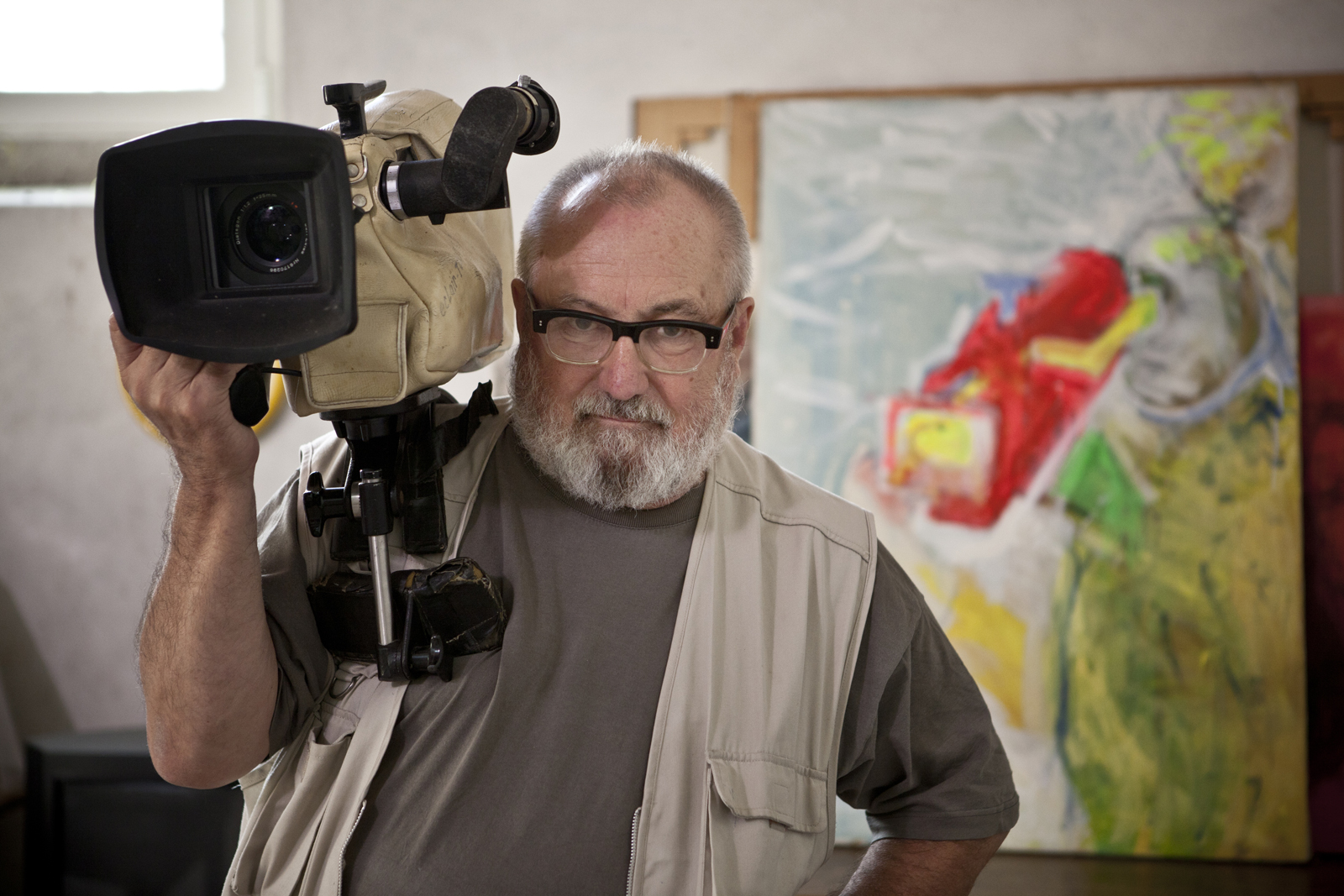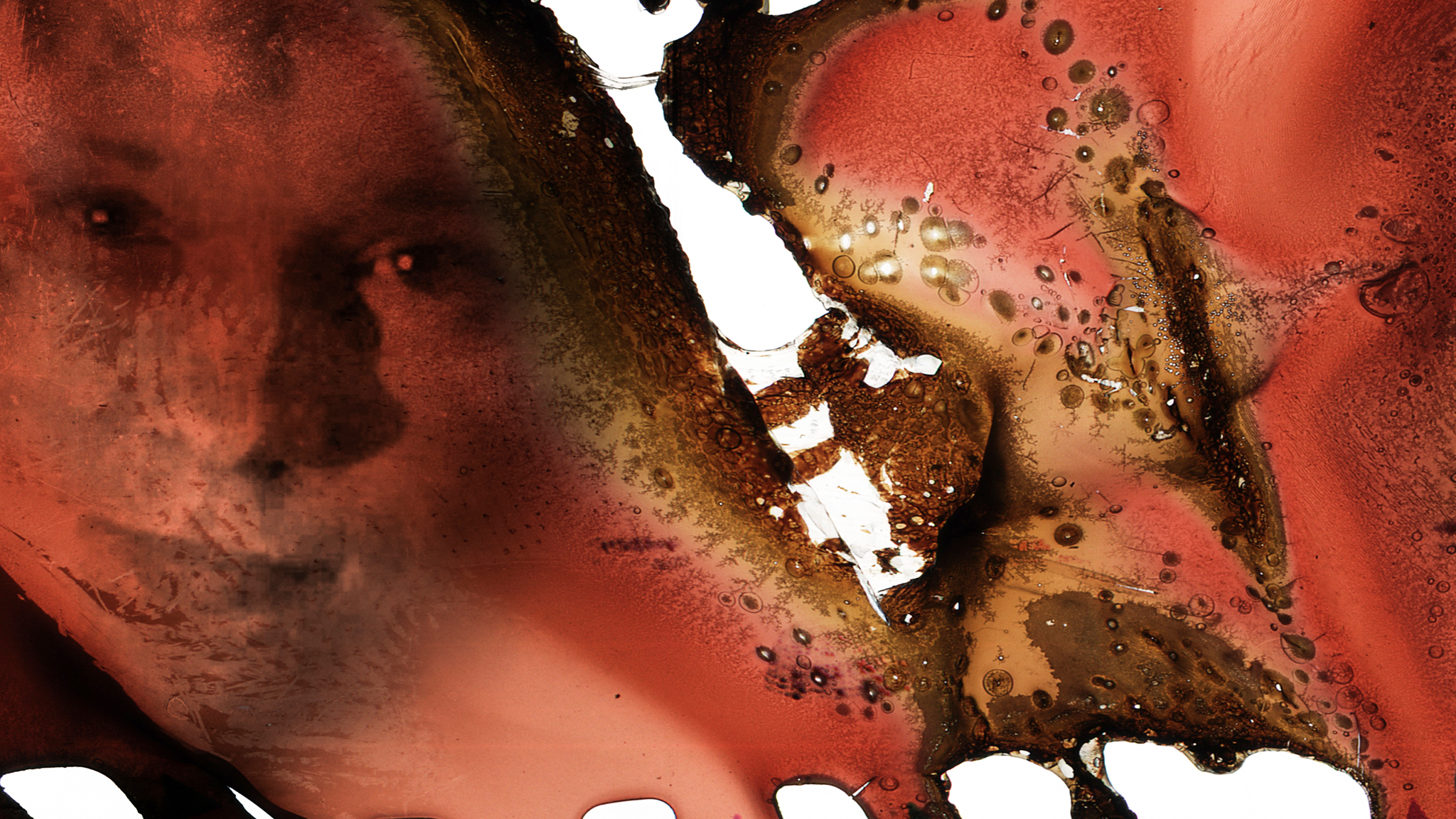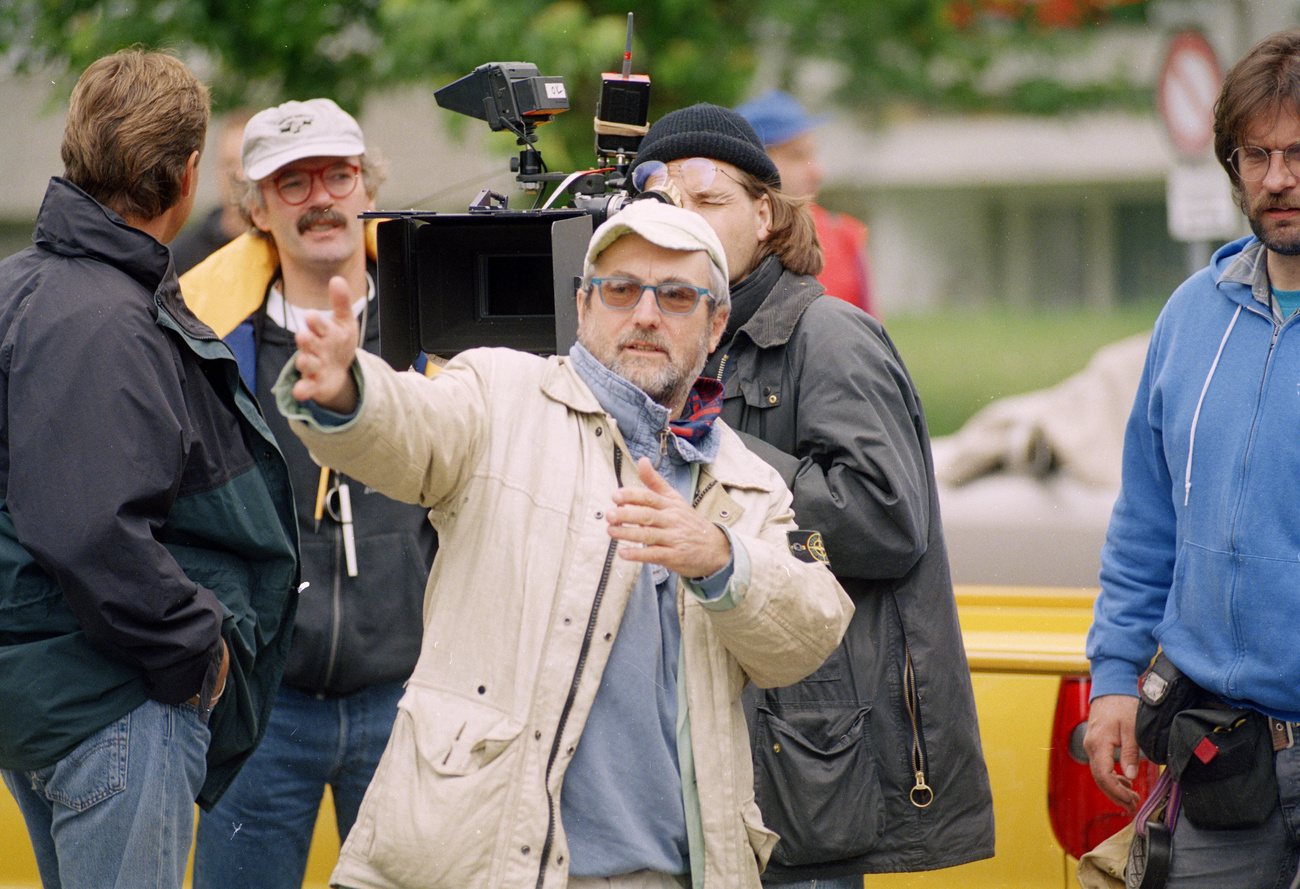
Taking a walk across the wild ‘Klopfiverse’ in Rotterdam

The Swiss cult filmmaker Clemens Klopfenstein has presented his latest feature, Cinema Bruciato (burnt-down cinema), at the Rotterdam Film Festival. Taking stock of a career spanning over 50 years, Klopfenstein tells SWI.swissinfo.ch about his peculiar “branding strategy” and his love for TikTok.
The 54th edition of the Rotterdam Film Festival, which wrapped up last month, is traditionally focused on new talents and first features. But what shone this year was the heritage-oriented section of the festival known as “Cinema Regained”. In the line-up of its cinephile gems one stood out: Clemens Klopfenstein, a very peculiar film veteran from Switzerland.
Klopfenstein is a Rotterdam regular whose films have been showcased in several previous editions. This year he presented Cinema Bruciato, his new self-portrait based largely on archival material from his work, along with the horror comedy Die Vogelpredigt (St. Francis Birds Tour, 2005) and the experimental La Luce Romana vista da Ferraniacolor (The Roman Light filmed by Ferraniacolor, 1974) – two films that reflect different stages of his career as a filmmaker.
We met at the festival hub and found a quiet corner to talk about our favourite subject – cinema, of course – which, in his case, is the same as talking about life.
Watching Klopfenstein’s films, the Swiss identity is one of his favorite issues to play with. He’s been living in Umbria, Italy, for more than 40 years, yet the roads in his films always lead back to his motherland.
“You know, there’s a famous phrase about Swiss people,” he says. “They always go to the station but never leave.” Indeed, Klopfenstein’s films seem to exist between the station and the world outside Switzerland, a broad space beyond any road or track.

The Swiss station
As a filmmaker whose style and narration defy the mainstream norms, Klopfenstein openly assumes his position as an outsider in the Swiss cinema landscape, which he describes as way too normal, expensive and highly dependent on commissions.
However, he also made quite a few films out of commissions, as opposed to authorial works. Doesn’t he see a contradiction there?
“When my films were screened in Rotterdam or Berlin, the commissions’ budgets were small. I would write a one-page proposal, and they would say, ‘That’s okay. Klopfi never needs much money, and he always comes up with something nice.’ I’m not one of those filmmakers who make films that cost millions and wait five years to shoot a new one. I make films with my friends and family.”
He also finds this wave of Swiss co-productions rather problematic. “You need to wait for years to get a clear settlement; then, they give you €5 million (CHF4.8 million) and expect you to shoot everything in five weeks!” For him, working this way is impossible. He likes to do things in his own way, in line with his “branding strategy”: small budgets, familiar spaces, close friends as actors, and lots of improvisation.
Klopfenstein was born in 1944 in Täuffelen, a small village by Lake Biel. After studying art in Basel and Zurich, receiving grants and prizes, Klopfenstein’s first aspiration was to become a painter.
Transitioning gradually to cinema, he began creating short films on Super 8 in the 1960s and found his first cinematographic “home” in the Solothurn Film Festival, dedicated exclusively to Swiss films, since its first edition in 1966. “That’s where I started as a so-called young filmmaker. They still call me young, though – a young filmmaker with a few grey hairs,” he quips.
His international breakthrough came with Geschichte der Nacht (The Story of Night, 1978) a black-and-white experimental film that weaves together footage from numerous European cities shot during the night.
Though his experimental period ended in the early 1980s, his subsequent fiction films were never devoid of experimentation. “I even shot Tatort: Alp-Traum, a Sunday evening police film for German television. Can you believe that?” he says jokingly.

Max & Polo, the bird-preachers
It’s also in the early 1980s that he met Max Rüdlinger, who would become one of his closest friends and collaborators. Just as his encounter with Rüdlinger was purely a coincidence, he met his other regular collaborator Polo Hofer, who was already a well-known rock star in Switzerland, by chance.
Das Schweigen der Männer (The Silence of the Men, 1997), the first feature film the three of them made, became a big hit and won the first Swiss Film Award in 1998. The chemistry between Max Rüdlinger and Polo Hofer was so strong that he decided to shoot a follow-up to the comedic duo, Die Vogelpredigt, in which we can see Klopfenstein playing himself.
Trailer of ‘Das Schweigen der Männer’ (The Silence of the Men)
Years later, when they wanted to make a trilogy out of them, things didn’t go as planned. “Polo was already very ill. He was dying, and we were still shooting. Then we stopped.” He died in 2017.
“Later, we decided to start all over again with Max. However, he felt empty, as if he had nothing left. Since black and white was to be inverted in the film, he had to paint his face black every day. Max nearly went crazy”, he recalls.
Although Das Ächzen der Asche (The Moaning of the Ashes, 2018), a very dark and elegiac film dedicated to Polo ends the trilogy, Klopfenstein doesn’t seem to feel like ending it, since he keeps changing the ending through the years.
In Cinema Bruciato too, we see a different ending to Max and Polo’s story: “I’m happy with these versions. Just like a painter, I can always go back, make a slight change, or create a collage with other scenes I have but forgot,” he says.

The editor and the director
Cinema Bruciato brings Klopfenstein back on the road again, but this time across his own films and assisted by Maria Kaur Bedi, a filmmaker who helped him look through all his archives and make new edits.
“It is said that editors shouldn’t assist in shootings because if they have been on the set, they are not free anymore; they can’t cut or edit as they want. Directors, on the other hand, shouldn’t cut the film either because they have an idea of the film when they write, and what they imagine is very different from the material after the shoot.”
Bedi didn’t know anything about the material, which was at least 30 hours long. She asked Klopfenstein to give her three days, and then proposed making new edits that he hadn’t thought of before.
In Der Ruf der Sibylla (the call of Sibylla), there’s a scene in the snow where a woman realises that she can change the weather by drinking. In Cinema Bruciato, that scene is followed by another scene in the snow but from another film, starring Bruno Ganz.
“I thought it was a brilliant idea!”, says Klopfenstein. “It’s the same place, because I not only like working with the same people but also in the same locations. Seen like this, it looks like a series. I could maybe do one for Netflix: The Klopfiverse!” he adds.
A young filmmaker with a few grey hairs
The “Klopfiverse” has always been particularly interested in the latest technologies, whereas most directors of his age still see the analog medium as sacred.
“When it comes to technological developments, I’ve always been at the forefront. My night films were unprecedented, and I was also the first to make fiction films on Video 8.” The Swiss scene, however, was not very welcoming. “I had to hide them and tell people that we shot on 35mm. It wasn’t like Denmark, where Lars von Trier could make a big deal about it. We, in Switzerland, had to hide it because we weren’t allowed to shoot anything except 35mm.”
Trailer of ‘Geschichte der Nacht’ (The Story of Night, 1978)
His newest discovery seems to be TikTok, introduced to him by a teenager. “While I was trying to come up with a new ending for Max and Polo, we started making these TikTok videos. I really loved the idea because initially my films were shot in a horizontal format. To make them vertical was a great change,” he explains. “Have you seen them?”
I tell him that I haven’t. “That’s because you’re too old for it!”, he says, and he’s right: I’m already in my mid-20s. He takes out his phone and starts to explain how it works. So we watch TikToks for a while before parting ways, heading to different cinemas in the rain-beaten streets of Rotterdam.
Edited by Virginie Mangin and Eduardo Simantob
Do you want to read our weekly top stories? Subscribe here.

In compliance with the JTI standards
More: SWI swissinfo.ch certified by the Journalism Trust Initiative





























You can find an overview of ongoing debates with our journalists here . Please join us!
If you want to start a conversation about a topic raised in this article or want to report factual errors, email us at english@swissinfo.ch.